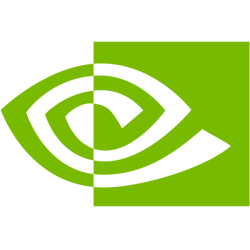Overall, NVIDIA demonstrates a strong business quality with significant revenue growth and competitive advantages in the AI market. Future prospects remain positive, driven by continued demand for AI infrastructure and innovative technologies. However, regulatory challenges in China and a decline in networking revenue present potential risks.
Analysis Date: February 26, 2025
Last Updated: March 12, 2025
Trailing Twelve Months (TTM) values provide a view of the company's performance over the last year.
Graham Value Metrics
Benjamin Graham's value investing approach focuses on finding stocks with a significant margin of safety between their intrinsic value and market price.
Intrinsic Value
Estimated fair value based on Graham's formula
$114.58
Current Market Price: $93.97
IV/P Ratio: 1.22x (>1.0 indicates undervalued)
Margin of Safety
Gap between intrinsic value and market price
18.0%
Graham recommended a minimum of 20-30% margin of safety
Higher values indicate a greater potential discount to fair value
ROE: 115.44203544203543
ROA: 19.794625496187308
Gross Profit Margin: 74.98946335931093
Net Profit Margin: 55.848027157712444
Trailing Twelve Months (TTM) values provide a view of the company's performance over the last year.
Strong Net Profit Margin
NVIDIA's net profit margin is approximately 55.8%, indicating a robust ability to convert sales into actual profit.
High Operating Profit Margin
0.6242
Operating Profit Margin
The operating profit margin stands at 62.4%, reflecting efficient operational management and cost control.
High Price to Free Cash Flow Ratio
The P/FCF ratio is 46.70, indicating that the stock may be overvalued compared to its free cash flow generation.
About Profitability Metrics
Profitability metrics measure a company's ability to generate earnings relative to its revenue, operating costs, and other relevant metrics. Higher values generally indicate better performance.
Return on Equity (ROE)
Measures how efficiently a company uses its equity to generate profits
115.44%
10%
15%
Higher values indicate better returns for shareholders
TTM (as of 2025-04-16)
Return on Assets (ROA)
Measures how efficiently a company uses its assets to generate profits
19.79%
3%
7%
Higher values indicate better asset utilization
TTM (as of 2025-04-16)
Gross Profit Margin
Percentage of revenue retained after accounting for cost of goods sold
74.99%
20%
40%
Higher values indicate better efficiency in production
TTM (as of 2025-04-16)
Net Profit Margin
Percentage of revenue retained after accounting for all expenses
55.85%
8%
15%
Higher values indicate better overall profitability
TTM (as of 2025-04-16)
Strong Liquidity Ratios
NVIDIA's current ratio of 4.44 and quick ratio of 3.88 demonstrate excellent short-term liquidity and ability to cover current liabilities.
Low Debt Levels
0.1258
Debt to Equity Ratio
The debt-to-equity ratio of 0.13 indicates that NVIDIA is conservatively financed, posing less risk during economic downturns.
Low Cash Ratio
With a cash ratio of 0.48, there is some concern about immediate liquidity, as cash reserves may not fully cover current liabilities.
About Financial Health Metrics
Financial health metrics assess a company's ability to meet its financial obligations and its overall financial stability.
Debt to Equity Ratio
Total debt divided by total equity
0.13x
1.0x
2.0x
Lower values indicate less financial leverage and risk
Less than 1.0 is conservative, 1.0-2.0 is moderate, >2.0 indicates high risk
Q4 2025
Current Ratio
Current assets divided by current liabilities
4.44x
1.0x
2.0x
Higher values indicate better short-term liquidity
Less than 1.0 is concerning, 1.0-2.0 is adequate, greater than 2.0 is good
Q4 2025


